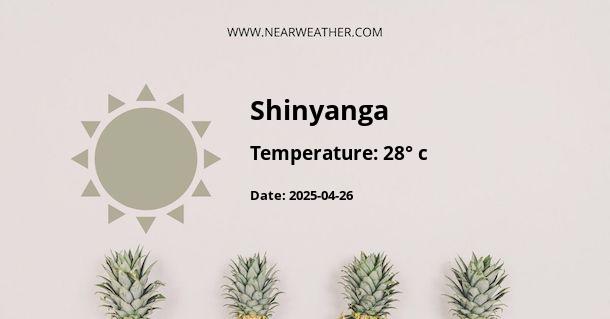Overview of Shinyanga Region, Tanzania
Located in the northern part of Tanzania, the Shinyanga Region boasts a unique climate, largely influenced by its geographical location and altitude. Shinyanga, also known as Shinyanga Mjini, is an important hub for agricultural activities, which are significantly affected by the region's weather patterns. The region is also known for its mining activities, particularly diamond mining.
Geographical Location and Topography
The Shinyanga Region is situated in the northwestern part of Tanzania. It shares borders with the Geita Region to the west, Arusha Region to the east, Simiyu Region to the south, and Mwanza Region to the north. The region's topography is largely characterized by plains, with a few scattered hills. Shinyanga's altitude ranges from approximately 1130 to 1490 meters above sea level.
Climate of Shinyanga Region
Shinyanga has a tropical savannah climate, also known as Aw climate under the Köppen climate classification. The region experiences two main seasons - a dry season and a rainy season.
Dry Season
The dry season in Shinyanga spans from June to September. During this period, the region experiences little to no rainfall. The temperatures range from 20°C to 30°C, and the weather is generally hot and dry with clear skies.
Rainy Season
The rainy season in Shinyanga usually starts in October and ends in May. This period is characterized by two rainfall peaks - the short rains (Vuli) from October to December and the long rains (Masika) from March to May. The average annual rainfall ranges between 700 mm and 1000 mm. The temperatures during the rainy season range from 25°C to 30°C.
Weather Patterns and Variations
Weather patterns in Shinyanga vary throughout the year, influenced primarily by the region's tropical savannah climate. The table below illustrates the average monthly temperatures and rainfall in Shinyanga.
| Month | Average Temperature (°C) | Average Rainfall (mm) |
|---|---|---|
| January | 26 | 94 |
| February | 26 | 86 |
| March | 26 | 133 |
| April | 25 | 241 |
| May | 25 | 58 |
| June | 23 | 5 |
| July | 22 | 2 |
| August | 23 | 2 |
| September | 24 | 8 |
| October | 25 | 55 |
| November | 25 | 144 |
| December | 26 | 114 |
Effects of Climate on Agriculture and Mining
The climate in Shinyanga has a significant impact on the region's primary economic activities - agriculture and mining. The rainy season, particularly the long rains, is crucial for crop cultivation. The region's main crops include maize, rice, sorghum, and groundnuts.
On the other hand, the dry season affects mining activities, particularly diamond mining, as the reduced rainfall decreases the water levels in rivers and dams, limiting the washing of minerals. The weather patterns also influence the region's energy supply, as the majority of the rural population relies on solar energy, which is abundant during the dry season.
Conclusion
In conclusion, Shinyanga's tropical savannah climate, characterized by a dry season and a rainy season, significantly influences the region's agriculture and mining activities. Understanding the region's climate and weather patterns is crucial for effective planning and management of these economic activities.
A - Shinyanga's Latitude is -3.750000 & Longitude is 33.000000.
A - Weather in Shinyanga is 21° today.
A - Climate Conditions in Shinyanga shows clear sky today.
A - Humidity in Shinyanga is 66% today.
A - Wind speed in Shinyanga is 4.25 km/h, flowing at 17° wind direction. today.
